Interview
Interview: Philip Tyler
In conversation with Philip Tyler, an artist and Course Leader on the Printmaking BA at the University of Brighton.
Can you talk about your journey into or interest the arts?
I grew up in a working class family in East London. We had no art or books in the house and the kids at my school had the three B’s for job prospects: Building site, Bank or Borstal.
At around the age of 7, Marvel Comics were advertised on TV and I started to buy them. I couldn’t read at that age, but I could look at the pictures and work out the story. Very soon I was drawing the characters and Jack Kirby was my hero.
At secondary school I had two fantastic art teachers who changed my life. Both taught me technical skills and gave me a good grounding in drawing. They made me realise that I could do something different with my life. My family did not support me in those early years which probably made me more determined to succeed. My working class ethic made me realise that if I wanted to do something it wasn’t going to be handed to me on a plate so I have worked hard at everything I do.
I still send and get art works from my both of old art teachers every year at Christmas nearly 40 years on.
Do you use a sketchbook? I’m interested in what a sketchbook means to you and your work?, or how people develop their ideas.
I didn’t really use sketchbooks on my degree course. I was really naïve and I never fully understood their true value as thinking tools.
Looking back now I can see how much thinking and referencing has been lost because of that.
I became much more committed to using them during my MA when I was commuting everyday. The sketchbook became a transportable studio where I could draw, record, plan, propose, reflect and explore ideas. At the end of my MA I started to use them habitually and also began to number them. I am now on my 163rd sketchbook.
I use sketchbooks in different ways. I teach through drawing, so I have my teaching sketchbooks.
If I am demonstrating something, exploring a process or material I draw in my these books which are filled with drawing fragments, notes, diagrams and colour notes. I make specific sketchbooks as teaching resources, a fashion illustration sketchbook, a colour sketchbook, a visual research sketchbook etc. These are made so that I can photograph the work for lectures and tutorials. These continue to be made and are often playful and experimental in their nature.
When I commute I draw people and I have made over 20,000 drawings from life. Looking at my collection the most interesting thing is that they span 30 years, so it’s interesting to see how my drawing has transformed over that time.
I also use sketchbooks for my own work. These contain notes, collages andexplore compositional possibilities. I include within this both my computer and my photography. (of which I also make thousands). Finally there are my holiday sketchbooks. I tend to use watercolours, gouache and mixed media documenting the placed we have travelled to.
Can you talk about the influences upon your work?
At school I was shown work by two artists that have stayed with me, Andrew Wyeth and Giorgio Morandi.
When I was at Loughborough in the mid 80s, we had a few black and white art magazines, a decent library, no art galleries and apart from a handful of college trips (The Hard-Won Image, The Forgotten Fifties, Pierre Bonnard in Paris) our exposure to others work was limited.
I did an exchange to Virginia Commonwealth University (VCU) in the USA in ’85 where I had the opportunity to go the The Metropolitan Museum of Art (Met), Museum of Modern Art (MoMA) and the Guggenheim Museum as as well as going to DC to the National Gallery of Art and The Phillips Collection. I became much more influenced by Franz Kline, early Mondrian and John Hoyland and Richard Diebenkorn.
After graduation, I became the slide librarian for Leeds College of Art and Design (LCAD) and had to label 10,000 misc slides, I was exposed to so much more art and design , especially as I had to look in all of the art school library book stock to find the images.
During my MA the British painters Richard Smith and Kenneth Martin became much more important to me as well as Elsworth Kelly.
When I turned my back on abstraction I wanted to relearn how to paint the figure. I sought out examples of good figurative painting from the turn of the 20th Century, artists like William Orpen, William Nicholson and John Singer Sargent. They became important touchstones in terms of understanding the craft of painting from observation. I did a significant amount of reading in particular Harold Speed‘s book on oil painting techniques. I’ve been interested for a long time in the interplay between abstraction and figuration as well as artists who are utilising digital imagery in their work as well so contemporary painters like Alex Kanevsky, Daniel Pitín and Justin Mortimer are really interesting. Over the last 10 years I have developed a Pinterest resource which has has over 33,000 images, most of these are used for teaching purposes but one cannot help to be influenced in some way by the work that you’ve seen.
Sometimes the real dilemma facing many students today is that there is an abundant choice of images to look at. Every mobile phone gives you access to a rolling stream of constantly changing work, so finding your own voice can be challenging.
When I look back to my time Iart school the choices in front of me were quite limited and I’m a great believer in exploiting limitation to its fullest.
It’s far too easy to be seduced by work which appears all the more glamorous on a computer screen. It disconnects you from the way that the work was made, the experience of looking at the actual work, to see the indecision, the scruffy surfaces, the thickly applied areas and erasure.
Looking at work really closely has certainly informed how I work and perceive work.
My interest in abstraction still remains and I would say that a lot of that work informs some of the approaches in my teaching, particularly when exploring colour. I still love the work of the formal abstract artists but I cannot see myself making that kind of work anymore.
Your work is very immediate and raw. In parts it looks somewhat in distress. What are you exploring through this?
As I said earlier my work completely changed after my MA. Partly this was a realisation that my work was empty of meaning and was simply appropriating the work of others.
I decided to stop making art and simply record what I could see. The subject dictates how it should be executed. When I wanted to explore the human figure with limited access to a model I painted myself. When I started to make this work it corresponded with the sudden death of my mother so my early figurative work was really informed by the process of mourning and grief.
That was 27 years ago, but in the last 7 years I’ve lost both my brother and my dad. I am almost at the same age that my brother was when he died so I’m very conscious of my own mortality even more so in recent times with this underlying sense of unease that informs the work that I’ve been making.
Three years ago I started the Edward Street series, self-portraits that are inspired by one of the spaces in the University. The sense of drama, Baroque lighting and a figure trying to come to terms with itself seemed to offer lots of visual potential.
I have made numerous versions of this image in both drawing, painting, digital work and printmaking as well as hundreds of photographs. In recent times the sense of domestic unease, the tensions created around the household particularly has been explored through the use of domestic objects (tables and chairs that are upturned) dramatic lighting strong visual diagonals. These act as cypher. I’m drawn to the notion of melancholy both in my interest in the visual arts as well as in music too.
You clearly have an interest in people and observation, and in particular the human form and face. Where does this come from?
I think it could be traced back to drawing Marvel Comics at the age of 7. I became fascinated with how to draw the human figure. When I started commuting back in 1988, I drew commuters everyday, falling asleep, standing at platforms, sitting. Over a seven year period the space that they inhabit became less important than their heads. I’m interested in the psychological tension that is conveyed through the expression and lighting on this structure. My figure paintings fall into three main categories the nude, figure groups and the head.
I’ve been interested in portraiture for a long time and have tried unsuccessfully to get into the BP Portrait Award which tends to favour photorealism. Likeness is elusive and since my appearance on Sky portrait artist of the year I have given this problem a tremendous amount of my time and energy. I have subsequently painted most of the cities in all of the different seasons of the series making over 200 portraits from the television programme. I have returned back to it on and off over the last couple of years and during lockdown I have made a consistent body, of Investigation.
Can you talk about your process of working. How do you work, how often, is there a particular pattern?
I would say that in my own work as well as my teaching I’m very process-driven and have various different strategies to the way that I work.
The starting point is usually photography and with the advent of high quality digital images on the end of your phone, I have used my phone camera relentlessly. My phone is my traveling sketchbook, it’s the way that I catch a visual incidents that may not necessarily immediately results in work being made.
Sometimes idea sit in embryo. Concepts and ideas are revisited finding nuances and variations of a particular motif. I make various iterations of the same image over and over again. I seldom make a one-off.
Painting is the major part of my practice and partly this is because of its ease, a limited range of materials which can yield a great deal. Thankfully I have a studio in my house so I can make work whenever I want to, but this usually happens on the weekend setting aside a few hours each day to make work.
Because of this I have learnt to work really quickly, so a session could produce 4 or 5 paintings (not all of which will be successful). I make collages reconfiguring the photographic source material that I’ve made.
Photoshop can be a really valuable tool.
Drawing is really important, not just gathering visual research which keeps my hand in. I draw to explore compositional possibilities as I investigate the potential of an image. I draw with a wide variety of materials including illustrator and Photoshop. Colour is a really Important too, trying out new colour recipes. There was a profound difference between the way that I painted in acrylic to the way that I painted in oil. I tended to work very physically with acrylic finding the drawing through the painting process.
When I worked in oil it was quite different, establishing quite a refined piece of drawing which was then filled in with your colour. Over the last 5 years my continued investigation of the medium has allowed me to find a way of using oil paint that’s much more physical.
I have been teaching printmaking for the last 30 years and it continues to inform the work that I do.
For me there’s a real interplay between image-making, photographs can be manipulated digitally which informs the development of paintings. Prints are madefrom the paintings which simplify the image down. These in turn informe the development of paintings and further photography.
I’m fascinated by the idea of what one places in front of the camera. I often construct elaborate still life setups in order to take my photographs I’ve also been intrigued by the idea of model making as part of that process and whilst I have made models and photographed them I have yet to fully utilise these in the production of my paintings.
Do you find the process of creating work relaxing or therapeutic? I’ve become increasingly interested in the relationship of the artist to their working patterns and environment.
I’m not sure if painting is relaxing although I do reach a state of mindfulness when I’m working. I lose myself in the process and that’s a blissful state of being. Painting can be incredibly exciting, it can also be really really frustrating particularly when it’s going wrong. I am often confronted with the situation where you know that something is not working but you can’t put your finger on it. This means that some paintings undergo radical transformation sometimes sanded down, re grounded and reworked or occasionally ending up at the tip when the surface has become too difficult and unwieldy to rework. However it’s true to say that I have a compulsion to work. When I’m painting I am completely immersed in the process of painting and obsessed with what I’m doing, but I do move from one body of work to another. I can get bored when I’ve made a lot of similar images so I jump from one motif to another motive to another to keep it fresh.
When I stop painting, I make prints, take more photographs, draw, read or write. I have a massive stack of books to get through at the moment. All of these processes are part my work.

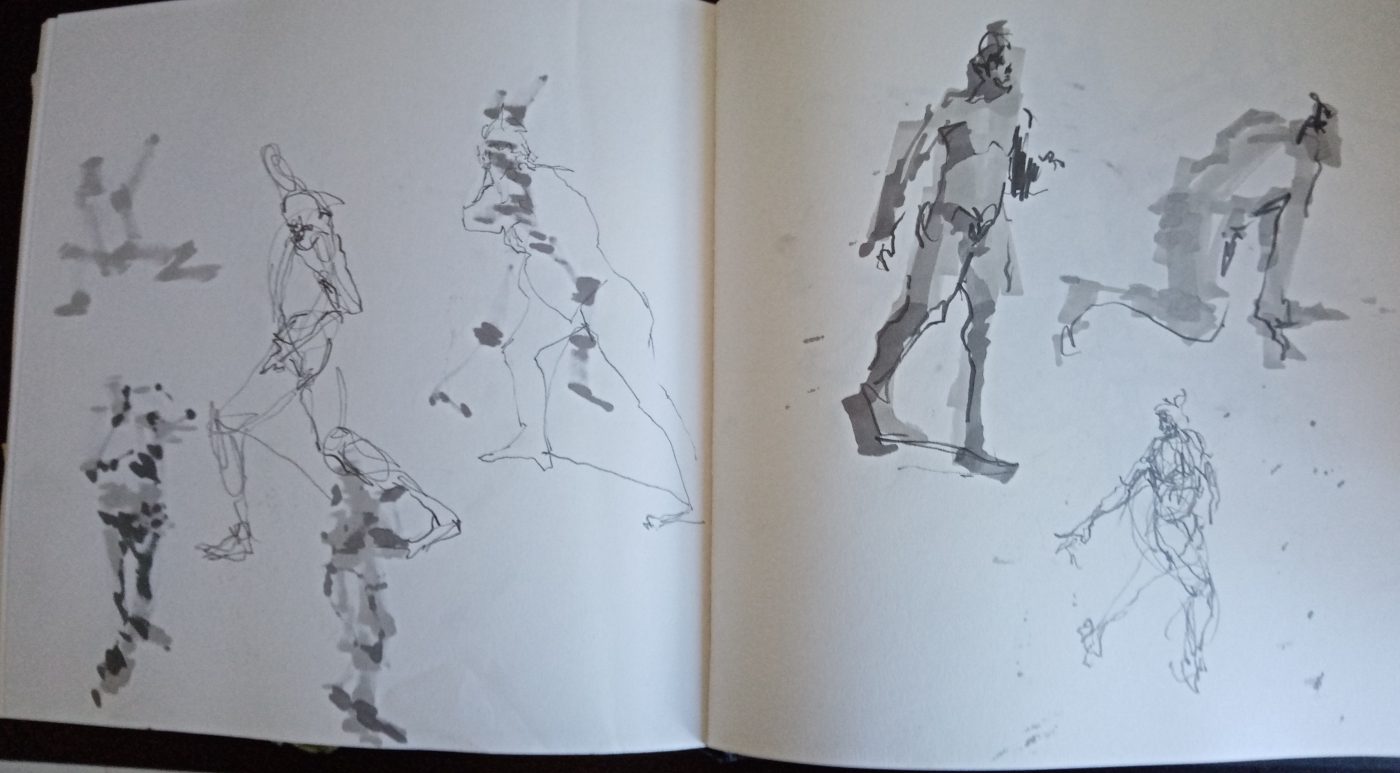
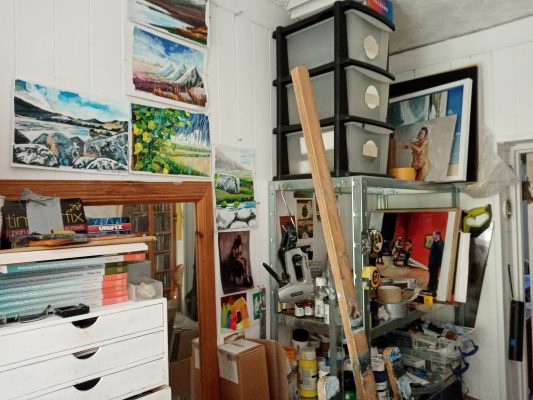
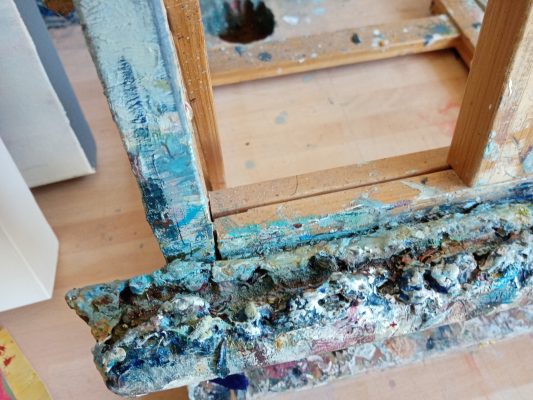
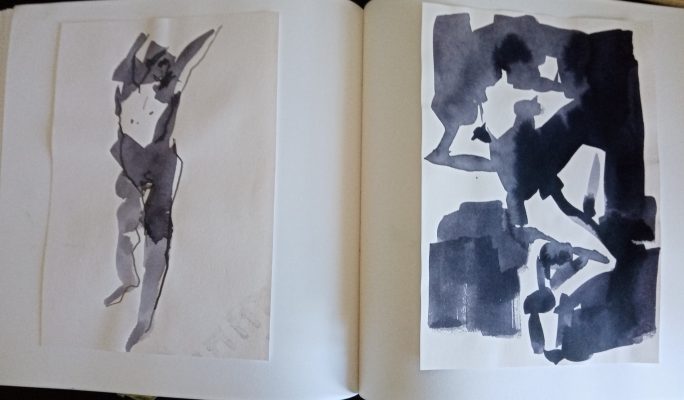
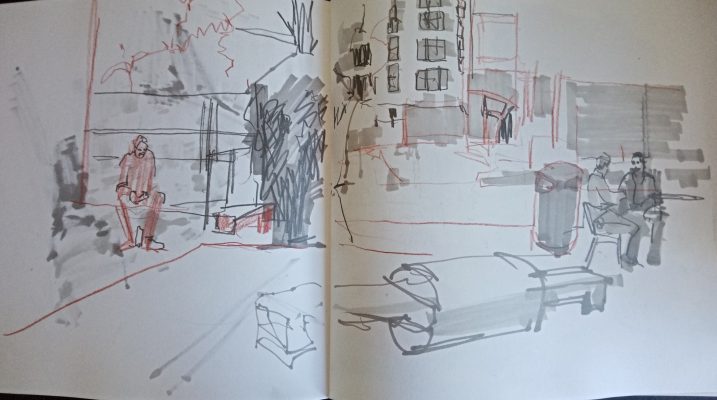
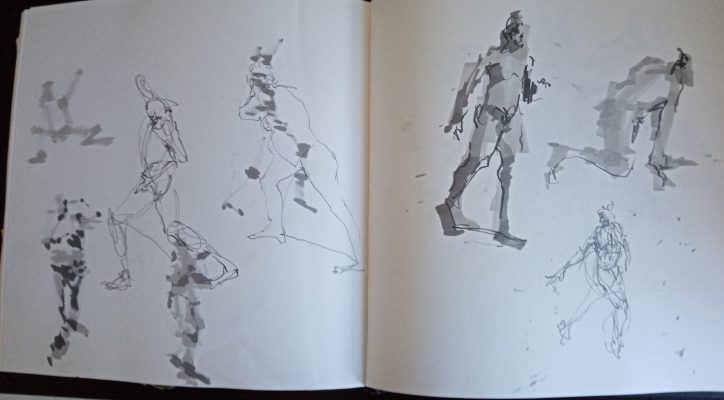
Do you like this artist?
If so, why not write a comment or share it to your social media. Thanks in advance if you can help in this way.